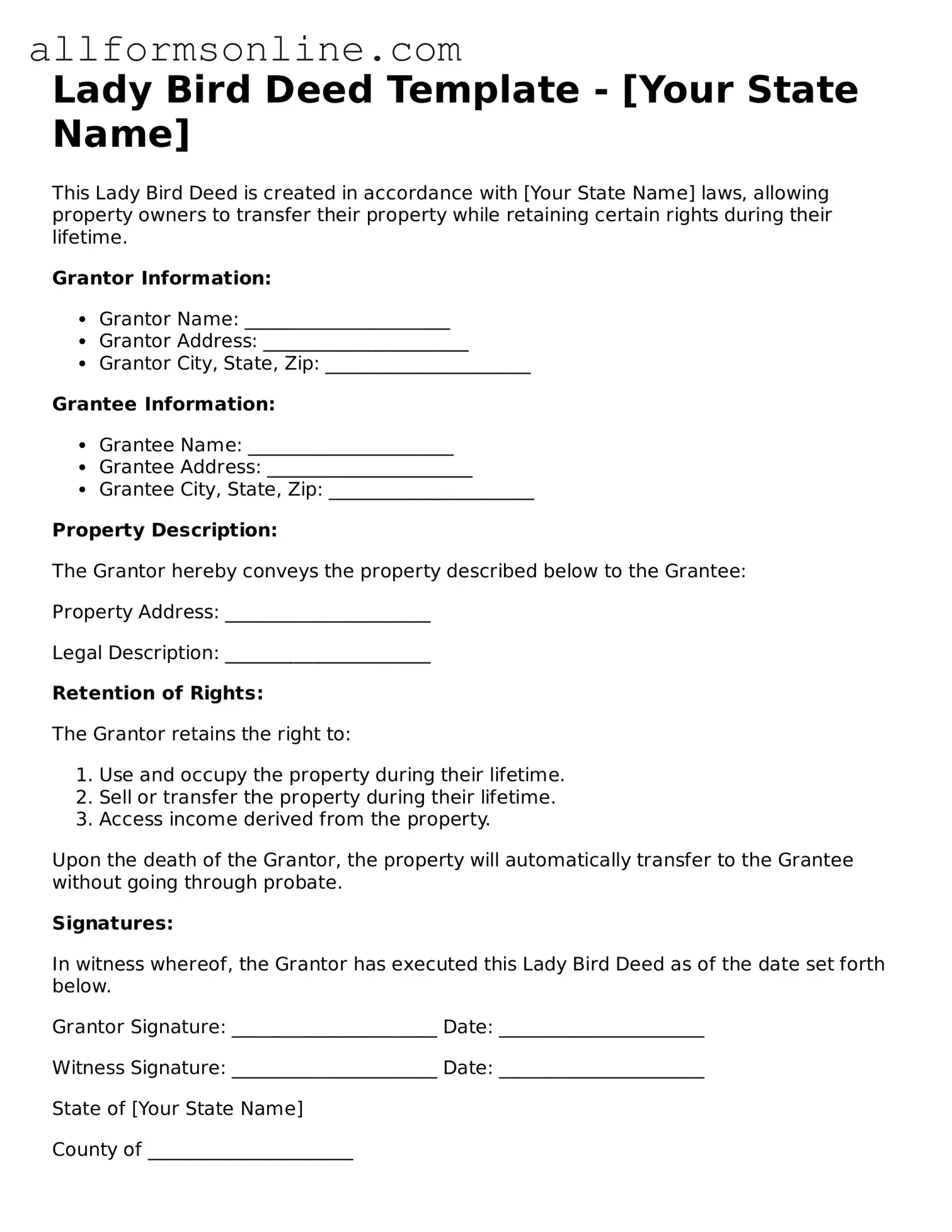What is a Lady Bird Deed?
A Lady Bird Deed, also known as an enhanced life estate deed, allows property owners to transfer their property to beneficiaries while retaining the right to live in and control the property during their lifetime. This type of deed avoids probate, making the transfer of ownership smoother and more efficient upon the owner's death.
How does a Lady Bird Deed work?
With a Lady Bird Deed, the property owner retains full control of the property. They can sell, mortgage, or change the beneficiaries at any time without needing consent from the beneficiaries. Upon the owner's death, the property automatically transfers to the named beneficiaries without going through probate.
What are the benefits of using a Lady Bird Deed?
The primary benefits include avoiding probate, retaining control over the property, and potential tax advantages. Since the property transfers directly to the beneficiaries, it can save time and money. Additionally, the property may not be counted as an asset for Medicaid eligibility, which can be crucial for long-term care planning.
Who can use a Lady Bird Deed?
Any property owner can use a Lady Bird Deed, but it is particularly beneficial for those who wish to transfer their home to family members while maintaining the right to live there. It’s commonly used by elderly homeowners planning for future care needs or estate planning.
Are there any drawbacks to a Lady Bird Deed?
While there are many advantages, there are also some drawbacks. If the property owner sells the home, the deed becomes void, and the benefits are lost. Additionally, if the owner has outstanding debts or liens, creditors may still pursue the property after death, which could complicate the transfer.
How do I create a Lady Bird Deed?
Creating a Lady Bird Deed typically involves drafting the deed with the help of a legal professional to ensure it meets state requirements. The property owner must clearly identify the property, the beneficiaries, and include the appropriate language to establish the life estate and transfer upon death. Once drafted, the deed must be signed and recorded with the county clerk's office.
Can a Lady Bird Deed be revoked?
Yes, a Lady Bird Deed can be revoked or modified at any time while the property owner is alive. The owner simply needs to create a new deed that either revokes the existing one or changes the beneficiaries. It’s important to follow proper legal procedures to ensure the changes are valid and recorded correctly.
